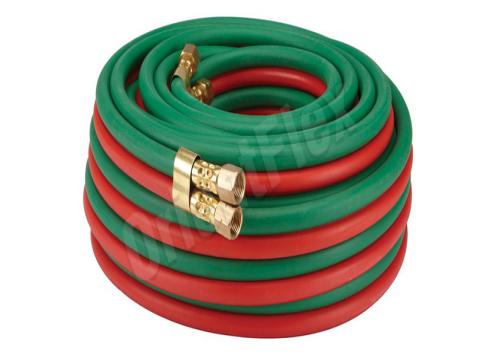Steam hoses are flexible and easy to use. They should be checked before use to ensure their safety and durability. These hoses should be kept in good condition to protect users from accidents which can cause injuries and damage equipment.
It is important to drain the hose every time you use it. This helps to avoid popcorning. It is also important to inspect the hoses periodically for lumps and blisters.
Steam hoses: Use with caution
Using steam hoses properly can dramatically reduce the risk of accidents in manufacturing plants. By choosing the right hose for your application and taking precautions when handling the hose, you can save lives, increase productivity, and extend its life.
A hose is comprised of three primary components: the tube, the reinforcement, and the cover. The tube carries the media, the reinforcement gives the tube pressure and motion strength, and the cover protects it from abrasions and environmental factors like chemicals and high temperature.
The most common problems with steam hoses occur due to the fact that users do not understand how to properly operate and maintain them. This can cause the hose to fail due to damage, stress, or strain caused by usage. These problems include cuts or gouges in the hose cover which expose the wire reinforcement, kinking or flattening of the hose, and steam leakage at coupling points or anywhere along the length of the hose.
The hose can also burst open if it is not depressurised prior to removal from service. The steel inlays can rust, and the hose may burst. When this happens, the hot steam escapes rapidly and may cause injuries. This problem can be avoided by using a hose that has galvanised steel inlays.
specification and model of steam hose
Steam hoses can be used for a wide range of industrial applications. They can channel dry, superheated or wet steam. They are usually made from EPDM or chlorobutyl and can withstand high temperature and weather elements. These hoses are suitable for use in chemical plants, steel mills and shipyards. These hoses are available in different lengths and can also be fitted with end fittings that connect to equipment.
When selecting a steam hose, it is important to know its maximum working pressure and diameter. The minimum bend radius is also a critical factor in choosing a hose for your application. A higher bending radius means the hose can be more easily installed and less likely to kink or puncture.
The inner tube of a steam hose is typically constructed from a synthetic or natural rubber. Reinforcement is then woven around the core, either in one or two layers. The reinforcement protects against high internal pressures, and helps eliminate static charges.
The ends of a hose are fitted either with lap joint (floating flanges) or fixed weldneck flanges. Standard flanges are 150#, but higher flanges can be ordered to increase the working force of a steam hose. The flanges should be properly bolted to avoid leakage or failure due to improper mounting.
how to store steam hoses
Steam hoses are susceptible to bursting under pressure, and the water that results can damage equipment or injure people. They must be installed, maintained and stored properly, and their fittings secured with safety clamps. Moreover, the operator must wear working clothes to protect him/herself from burns in case of accidental contact with a hot hose.
The main components of a steam hose are the core tube material and wall construction, reinforcement layers, cover, and end connections. Each of these components contributes to the hose’s functionality and lifespan.
The temperature, pressure and flow requirements for your system media will determine the right hose materials. The material should be compatible with the media and resistant to corrosion. The material should be able resist high temperatures and abrasions.
The most popular choice for hoses is ethylene-propylene (EPDM) or chlorobutyl rubber. EPDM has a wide temperature range, excellent chemical compatibility, and high resilience. It also resists weather changes and chemicals, and it can withstand high internal pressures. Another option is nitrile butadiene rubber (NBR), which has an extremely wide temperature range and is highly resistant to chemicals and abrasions. However, NBR is not oil-resistant and can be damaged by ozone. It can also be damaged by UV radiation.

